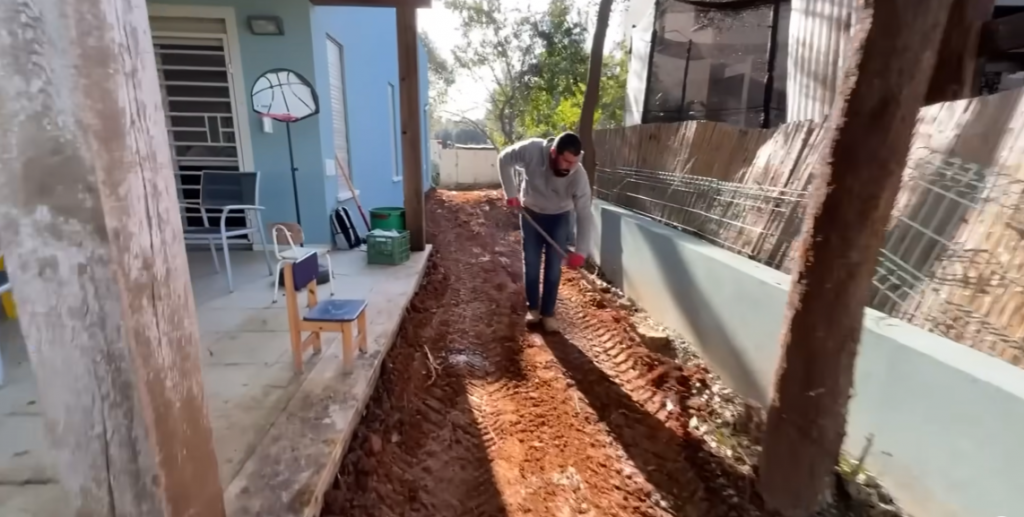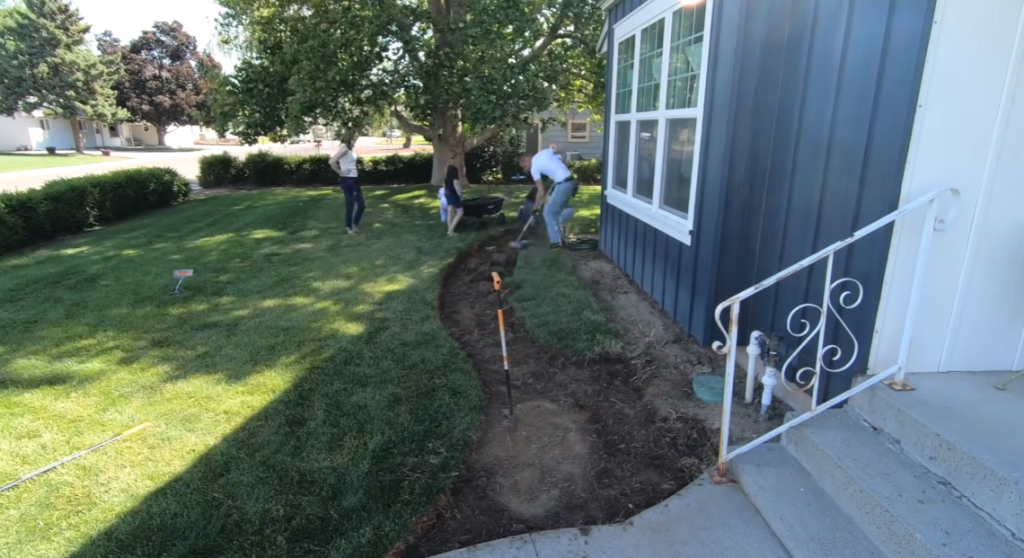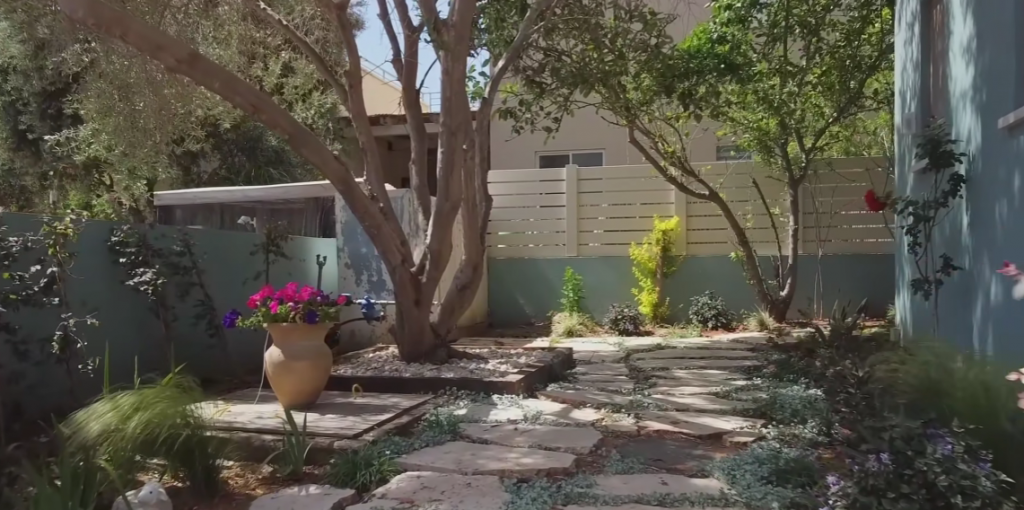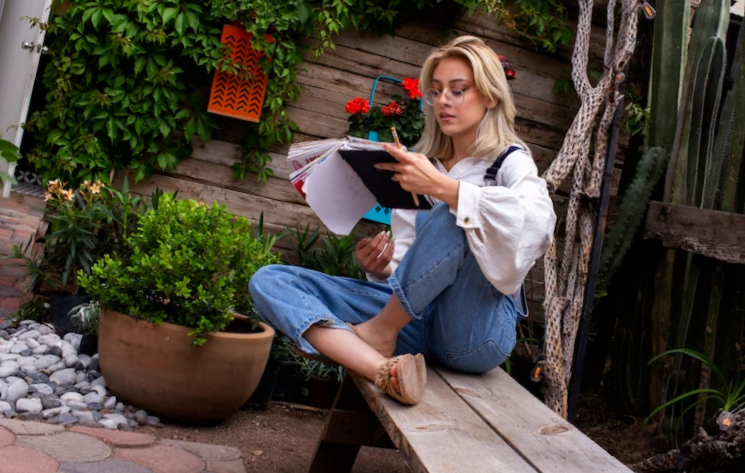Home gardening and landscaping are not only great ways to enhance the curb appeal and value of your property, but also to create a personal oasis that reflects your style and needs. However, many homeowners may shy away from these projects due to the perceived high costs and complexity involved. Fortunately, there are many budget-friendly approaches that can help you achieve your dream outdoor space without breaking the bank. In this article, we will share some tips and tricks on how to plan, choose, and execute your home garden and landscape projects while keeping your costs low and your satisfaction high.
What We'll Cover
Planning Your Home Garden and Landscape

The first step to any successful home garden and landscape project is to have a clear plan that outlines your vision, goals, and budget. A good plan will help you avoid costly mistakes, save time and money, and ensure that your project meets your expectations.
Assessing Your Budget
Before you start any project, you need to determine how much money you are willing or able to spend on it. This will help you set realistic expectations and prioritize your needs and wants. To assess your budget, you can:
- Review your income and expenses to see how much you can allocate for your project.
- Research the average costs of similar projects in your area or online.
- Consider the return on investment (ROI) of your project. Some projects may increase the value of your home more than others.
- Set aside a contingency fund for unexpected expenses or changes.
Style Preferences and Needs
Once you have a budget in mind, you can start thinking about what kind of outdoor space you want to create. This will depend on your personal style preferences and practical needs. To identify your style preferences and needs, you can:
- Browse through magazines, websites, blogs, or social media for inspiration and ideas.
- Visit local nurseries, garden centers, or home improvement stores to see what plants and materials are available.
- Take note of the existing features of your home and landscape, such as the architecture, color scheme, size, shape, slope, soil type, sun exposure, drainage, etc.
- Think about how you want to use your outdoor space, such as for relaxing, entertaining, gardening, playing, etc.
- Make a list of the elements you want to include in your project, such as plants, flowers, trees, shrubs, grass, mulch, rocks, gravel, pavers, bricks, wood, metal, concrete, water features, lighting, furniture, accessories, etc.
Creating a Detailed Plan
After you have a general idea of what you want to achieve with your project, you need to create a detailed plan that specifies the design elements and layout of your outdoor space. A detailed plan will help you visualize your project better and communicate it more effectively to others. To create a detailed plan, you can:
- Draw a sketch or use a software program to map out your outdoor space. Include measurements and dimensions of the area and the elements you want to add or modify.
- Choose a design style that suits your home and personality. There are many styles to choose from, such as traditional, modern, rustic, tropical, cottage, etc.
- Select the plants and materials that match your style preferences and needs. Consider factors such as color, texture, shape, size, growth habit, maintenance requirements, hardiness, seasonal interest, etc.
- Arrange the plants and materials in a way that creates balance, contrast, harmony, and focal points in your landscape. Follow basic design principles such as proportion, scale, symmetry, asymmetry, repetition, variety, etc.
Choosing Low-Maintenance, High-Value Plants and Materials

One of the most important aspects of any home garden and landscape project is choosing the right plants and materials that will enhance the beauty and functionality of your outdoor space. However, not all plants and materials are created equal. Some may require more care, maintenance, and resources than others. Some may also offer more value in terms of durability, quality, and longevity than others. Therefore, it is wise to choose plants and materials that are low-maintenance and high-value for your project.
Plant Selection
Plants are the living components of your landscape that provide color, texture, shape, and life to your outdoor space. However, not all plants are suitable for every location or condition. Some plants may thrive in certain climates, soils, or sun exposures while others may struggle or die. Some plants may also require more watering, fertilizing, pruning, or pest control than others. Therefore, it is important to choose plants that are native or adapted to your area and have low-maintenance requirements for your project.
Some benefits of choosing native or adapted plants are:
- They are more likely to survive and flourish in your local environment without needing much intervention or assistance from you.
- They are more resistant to pests and diseases that may affect non-native or exotic plants.
- They are more compatible with the existing ecosystem and wildlife in your area and may attract beneficial insects, birds, or animals to your landscape.
- They are more environmentally friendly and may reduce your water, fertilizer, and pesticide usage and costs.
Some examples of low-maintenance plant varieties are:
| Plant | Details |
| Perennials | These are plants that live for more than two years and usually come back every year. They may require some initial care and establishment, but once they are established, they need little attention from you. Some examples of low-maintenance perennials are daylilies, hostas, coneflowers, lavender, salvia, sedum, etc. |
| Evergreens | These are plants that keep their leaves or needles throughout the year. They provide year-round interest and structure to your landscape. They may need some occasional pruning or shaping, but they generally do not need much care or maintenance. Some examples of low-maintenance evergreens are boxwood, juniper, holly, arborvitae, spruce, pine, etc. |
| Ornamental grasses | These are plants that have grass-like foliage and produce showy seed heads or plumes. They add texture, movement, and color to your landscape. They are very easy to grow and maintain and can tolerate a wide range of conditions. Some examples of low-maintenance ornamental grasses are fountain grass, switch grass, blue oat grass, feather reed grass, etc. |
Some plant species that offer long-term value are:
| Plant | Details |
| Shade trees | These are large trees that provide shade and cooling to your home and landscape. They can reduce your energy costs and increase your property value. They also provide habitat and food for wildlife and improve air quality. Some examples of shade trees are oak, maple, birch, beech, elm, etc. |
| Fruit trees | These are trees that produce edible fruits for you and your family. They can provide fresh, healthy, and delicious food for years to come. They also add beauty and fragrance to your landscape. Some examples of fruit trees are apple, pear, peach, cherry, plum, etc. |
| Flowering trees | These are trees that produce showy flowers in spring or summer. They can add color and charm to your landscape. They also attract pollinators and beneficial insects to your garden. Some examples of flowering trees are dogwood, magnolia, crabapple, redbud, etc. |
Material Selection
Materials are the non-living components of your landscape that provide structure, support, and definition to your outdoor space. However, not all materials are equally durable, cost-effective, and eco-friendly. Some materials may wear out, crack, fade, or rot over time while others may last longer and require less maintenance. Some materials may also have a negative impact on the environment while others may be more sustainable and resource-efficient. Therefore, it is important to choose materials that are durable and cost-effective for your project.
Some benefits of choosing durable and cost-effective materials are:
- They can withstand the elements and natural wear and tear without needing much repair or replacement.
- They can save you money in the long run by reducing your maintenance and replacement costs.
- They can enhance the appearance and quality of your landscape by providing a consistent and attractive look.
Some options for hardscape materials are:
| Material | Details |
| Stone | This is a natural material that comes in various shapes, sizes, colors, and textures. It is very durable and can last for decades or centuries. It can be used for various purposes such as paving, edging, retaining walls, steps, fire pits, etc. Some examples of stone materials are flagstone, slate, granite, marble, limestone, etc. |
| Wood | This is a natural material that comes from trees or other plants. It is very versatile and can be used for various purposes such as decking, fencing, pergolas, arbors, trellises, etc. It can add warmth and character to your landscape. However, it may require some treatment or sealing to prevent rotting, warping, or insect damage. Some examples of wood materials are cedar, pine, redwood, teak, etc. |
| Gravel | This is a natural material that consists of small rocks or pebbles. It is very easy to install and maintain and can be used for various purposes such as pathways, driveways, patios, etc. It can create a casual and rustic look in your landscape. However, it may need some edging or bordering to prevent spreading or erosion. Some examples of gravel materials are pea gravel, crushed stone, river rock, etc. |
Some eco-friendly and budget-conscious choices are:
| Option | Details |
| Recycled materials | These are materials that have been reused or repurposed from other sources such as old bricks, tiles, glass bottles, tires, etc. They can reduce waste and save resources by giving new life to old items. |
- They can add creativity and uniqueness to your landscape by creating interesting patterns, shapes, or features.
- They can save you money by using materials that are readily available or inexpensive.
| Option | Details |
| Reclaimed materials | These are materials that have been salvaged or recovered from old buildings, structures, or sites such as barn wood, railroad ties, cobblestones, etc. They can preserve the history and character of your landscape by incorporating elements from the past. |
- They can reduce the demand and impact on natural resources by using materials that would otherwise be discarded or destroyed.
- They can add charm and authenticity to your landscape by creating a vintage or antique look.
DIY Home Garden and Landscape Projects

One of the most rewarding ways to save money on your home garden and landscape projects is to do them yourself. DIY projects can give you more control and flexibility over your project, as well as a sense of accomplishment and pride. However, DIY projects also require some planning, preparation, and execution skills that may not be easy for everyone. Therefore, it is important to know your limits and abilities before you embark on any DIY project.
Benefits of DIY
Some benefits of doing your home garden and landscape projects yourself are:
- You can save money on labor and equipment costs by using your own skills and tools.
- You can customize your project to suit your personal preferences and needs by choosing your own plants and materials.
- You can learn new skills and gain more knowledge about gardening and landscaping by doing your own research and education.
- You can enjoy the process and the outcome of your project by having fun and being creative.
Planning Your DIY Project
Before you start any DIY project, you need to do some research and education to learn more about the project you want to do. This will help you avoid mistakes, injuries, or disappointments that may arise from lack of information or experience. To plan your DIY project, you can:
- Find tutorials, guides, or videos online or in books or magazines that show you how to do the project step by step. Look for reputable sources that provide clear instructions, tips, and examples.
- Seek advice from experts or professionals in the field who can offer you valuable insights, suggestions, or feedback. You can consult with local nurseries, garden centers, home improvement stores, landscapers, contractors, etc.
- Use local resources that can help you with your project such as libraries, community centers, extension services, etc. You may find useful information, materials, or assistance from these places.
Execution
After you have done your research and education, you are ready to execute your DIY project. This is the most exciting and challenging part of the process where you put your plan into action. To execute your DIY project, you can:
- Follow the instructions or guidelines that you have found or received for your project. Make sure you understand each step and have all the necessary tools and materials ready before you start.
- Take safety precautions and use proper equipment when doing your project. Wear protective gear such as gloves, goggles, boots, etc. Use appropriate tools such as hammers, saws, drills, etc. Be careful when handling sharp, heavy, or hot objects.
- Ask for help from friends or family members who can assist you with your project. They can provide moral support, physical help, or technical advice. They can also make the project more fun and enjoyable.
Some common DIY projects that you can do for your home garden and landscape are:
- Building raised beds: Raised beds are elevated structures that contain soil for growing plants. They can improve drainage, soil quality, and pest control. They can also create a neat and tidy look in your landscape. To build raised beds, you will need wood planks, screws, drill, level, tape measure, saw, soil, and plants.
- Installing a water feature: A water feature is an element that adds water to your landscape such as a fountain, pond, birdbath, etc. It can create a soothing sound, a cooling effect, and a focal point in your landscape. It can also attract wildlife and enhance biodiversity. To install a water feature, you will need a container, a pump, a hose, a power source, water, and plants or accessories.
- Creating a fire pit: A fire pit is an element that adds fire to your landscape such as a bowl, a ring, or a pit. It can create warmth, light, and ambiance in your landscape. It can also provide a place for cooking, entertaining, or relaxing. To create a fire pit, you will need bricks, stones, gravel, sand, mortar, shovel, trowel, level, and firewood.
Saving on Labor and Equipment Costs
One of the main advantages of doing your home garden and landscape projects yourself is that you can save money on labor and equipment costs that would otherwise be incurred if you hired someone else to do them for you. However, there are still some ways that you can further reduce these costs while doing your DIY projects. Some tips on saving on labor and equipment costs are:
- Enlist the help of friends or family members who can assist you with your project. They can provide moral support, physical help, or technical advice. They can also make the project more fun and enjoyable.
- Rent or borrow equipment that you do not own or use frequently such as power tools, ladders, wheelbarrows, etc. You can find rental options at local home improvement stores, hardware stores, or online platforms. You can also ask your neighbors, friends, or family members if they have any equipment that you can borrow or share.
- Avoid common mistakes that may result in wasted time, money, or materials such as measuring incorrectly, cutting inaccurately, installing improperly, etc. Make sure you follow the instructions or guidelines carefully and check your work frequently.
Maintaining Your Home Garden and Landscape

The final step to any home garden and landscape project is to maintain it properly and regularly. This will ensure that your project stays in good condition and continues to provide you with the benefits and enjoyment that you expect from it. Maintenance is not only important for the appearance and quality of your project, but also for its health and longevity.
Importance of Maintenance
Some reasons why maintenance is important for your home garden and landscape are:
- It can prevent or reduce problems such as weeds, pests, diseases, erosion, etc. that may affect your plants and materials negatively.
- It can improve the performance and function of your plants and materials such as growth, flowering, fruiting, drainage, etc.
- It can extend the lifespan and durability of your plants and materials by preventing or delaying deterioration, decay, or damage.
- It can enhance the beauty and value of your project by keeping it clean, neat, and attractive.
Cost-Effective Maintenance Strategies
Some strategies that can help you maintain your home garden and landscape effectively and efficiently are:
- Mulch your plants regularly to suppress weeds, retain moisture, regulate temperature, and enrich soil. You can use organic mulches such as wood chips, leaves, straw, etc. or inorganic mulches such as gravel, pebbles, rock, etc.
- Water your plants wisely to avoid overwatering or underwatering them. You can use drip irrigation systems, rain barrels, soaker hoses, etc. to deliver water directly to the roots of your plants. You can also water your plants early in the morning or late in the evening to reduce evaporation and water loss.
- Prune your plants periodically to remove dead, damaged, or diseased branches, leaves, or flowers. This will improve the health, shape, and appearance of your plants. It will also encourage new growth, flowering, or fruiting.
- Fertilize your plants sparingly to provide them with the nutrients they need to grow and thrive. You can use organic fertilizers such as compost, manure, worm castings, etc. or synthetic fertilizers such as granular, liquid, or slow-release forms. You can also test your soil to determine its pH level and nutrient content before applying any fertilizer.
- Inspect and adjust your materials occasionally to ensure that they are functioning properly and safely. You can check for cracks, loose parts, wear and tear, etc. on your hardscape materials such as paving, edging, walls, etc. You can also check for leaks, clogs, malfunctions, etc. on your water features such as fountains, ponds, birdbaths, etc.
Conclusion
Home gardening and landscaping are rewarding projects that can transform your outdoor space into a beautiful and functional extension of your home. However, they do not have to be expensive or complicated endeavors that require professional help or intervention. By following some budget-friendly tips and tricks that we have shared in this article, you can plan, choose, and execute your home garden and landscape projects yourself while keeping your costs low and your satisfaction high. Whether you want to create a relaxing retreat, an entertaining area, a productive garden, or a combination of these elements, you can achieve your dream outdoor space by considering your style preferences and budget constraints while embarking on your own DIY projects.
The responses below are not provided, commissioned, reviewed, approved, or otherwise endorsed by any financial entity or advertiser. It is not the advertiser’s responsibility to ensure all posts and/or questions are answered.





